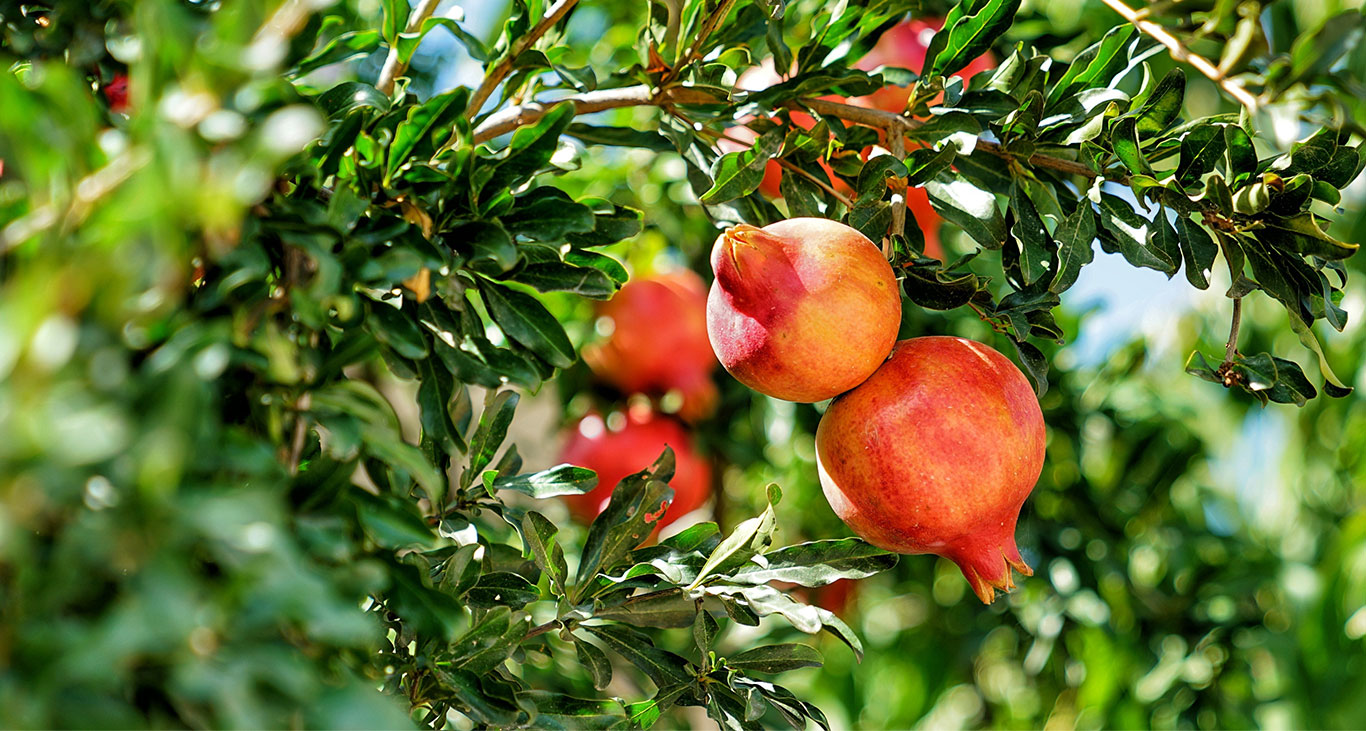
Pomegranate is due to its proven antioxidant and medicinal properties has become a star attraction for young and health-conscious population around the world.From being mainly an exotic fruit during nineties Pomegranate has become a mainstream fruit in western countries, mainly due to its miraculous medicinal and antioxidant properties In India it is grown in western region mainly in Maharashtra and Karnataka.
Apart from Spain and Portugal India is a major exporter of Pomegranate to EU and also to far eastern countries. Even the indigenous market is improving due to awareness of the general public about the virtues of eating pomegranate.
Cultivation of Pomegranate was sturdily increasing until 2010. It was at this juncture when the devastating disease named” Bacterial Blight “struck pomegranate farmers in Maharashtra initially and later on spread all over the western India. The disease has nearly invaded entire Pomegranate growing region in western India. Recently it also spread to Himachal Pradesh as well.
Since then, the scientists of various university and in private sector as well are trying find a viable solution to control this disease. But so far there has not been any significant progress in this direction.
Presently the farmers have two options to mitigate this problem either they use very high dosages of antibiotics, or they use very high doses of chemicals such as hydrogen peroxide which can have serious detrimental effect on the Pomegranate plant in long run not to mention of heavy metal infestation on the fruits and in soil. The excessive use of Antibiotics would create multi drug resistant version of bacterial blight and other pathogens. This is a very dangerous situation and indiscriminate use of anti-biotic needs to be stopped at all costs. Further the use of antibiotics only curtails existing infection it does not protect the plant from fresh infection and hence the antibiotic sprays have to be applied at very short intervals for effective control of bacterial blight thereby increasing the chances of developing MDR bacteria many folds.
We at Hi Cell crop Sciences Pvt Ltd have been working very hard for last eight years along with local as well as European union scientists to develop an effective nonchemical solution to control of bacterial blight on pomegranate. Our results were duly rewarded when during our trails in the year 2020-21 showed that two application seven days apart of Hi Cell Master (5 ml/L) and Hi Cell Victor (2.5 ml/L) effectively controls the existing infection of bacterial blight. There after application of Hi Cell Master (5 ml/L) and Hi Cell Victor (2.5 ml/L) every 15 days can effectively control the spread of bacterial Blight on non-infected plants.
These trails were conducted on small and medium sized pomegranate farms under below average management conditions. Our success rate has been more than 80 % for control of existing bacterial blight infestation and more than 90% as a prophylactic spray!
Dosage: The suggested dosage of Hi Cell Master (5 ml/L) and Hi Cell Victor (2.5 ml/L) has been arrived at after lot of research Any attempt to reduce the dosage will not produce desired results and may create more resistant bacteria wilt l strain which may be difficult to control.
Regular application of Hi Cell Master (5 ml/L) and Hi Cell Victor (2.5 ml/L) every 15 days will also increase the size of the fruits and make the fruit smore shiny and marketable. The effective yield increase can be in the range of 15-25% over control. Needless to mention that application of Hi Cell products to control Bacterial blight on Pomegranate is beneficial proposition for the farmers in more than one way.
WE HAVE INRODUCED A BACTERIAL BLIGHT COMBO SPRAY (HI CELL MASTER (ONE LITRE AND HI CELL VICTOR 500 ML) enough for 200-liter water for spray. INTRODUCTORY PRICE WOULD BE 10% LESS AS COMPARED TO SPERATE PURCHASES.